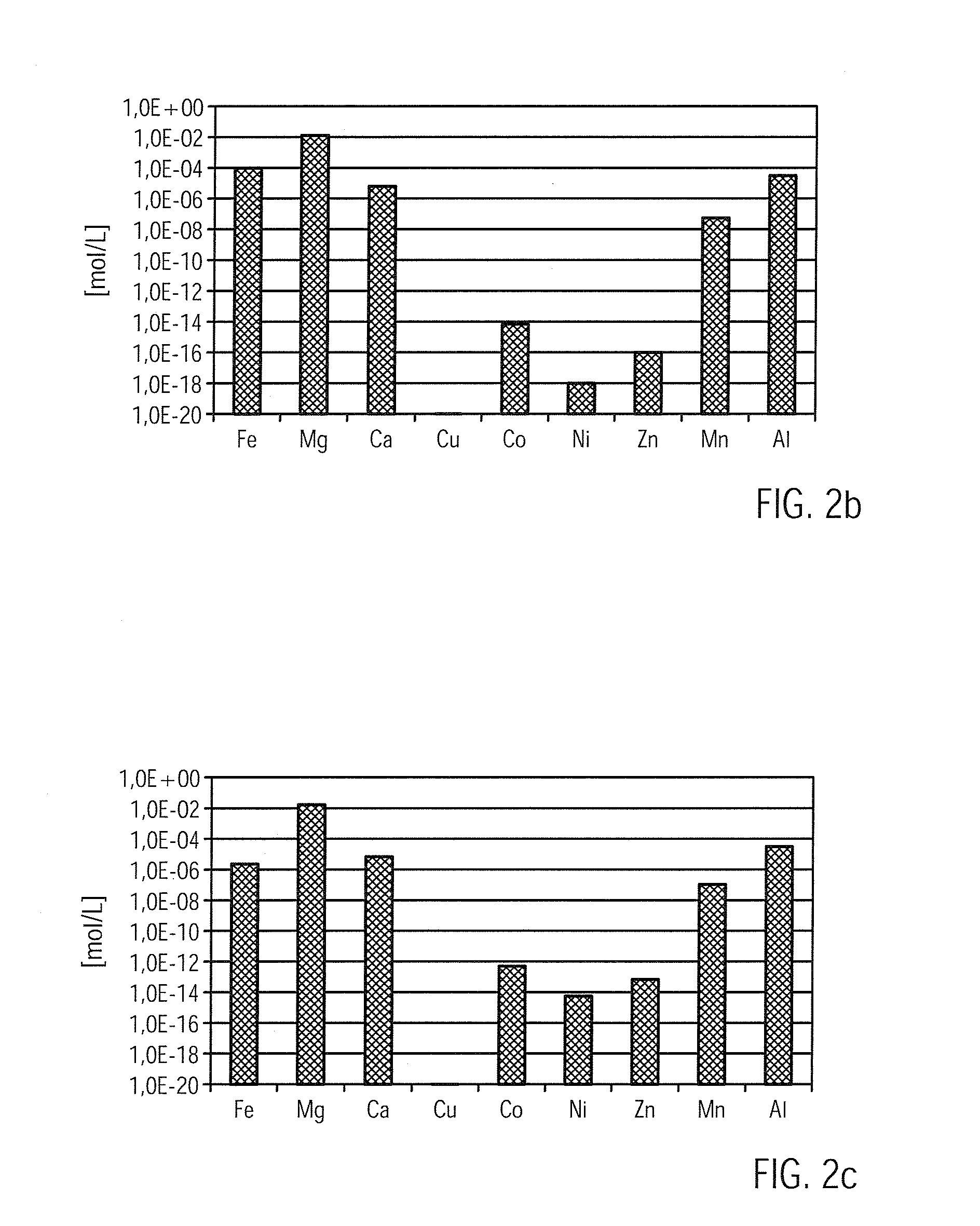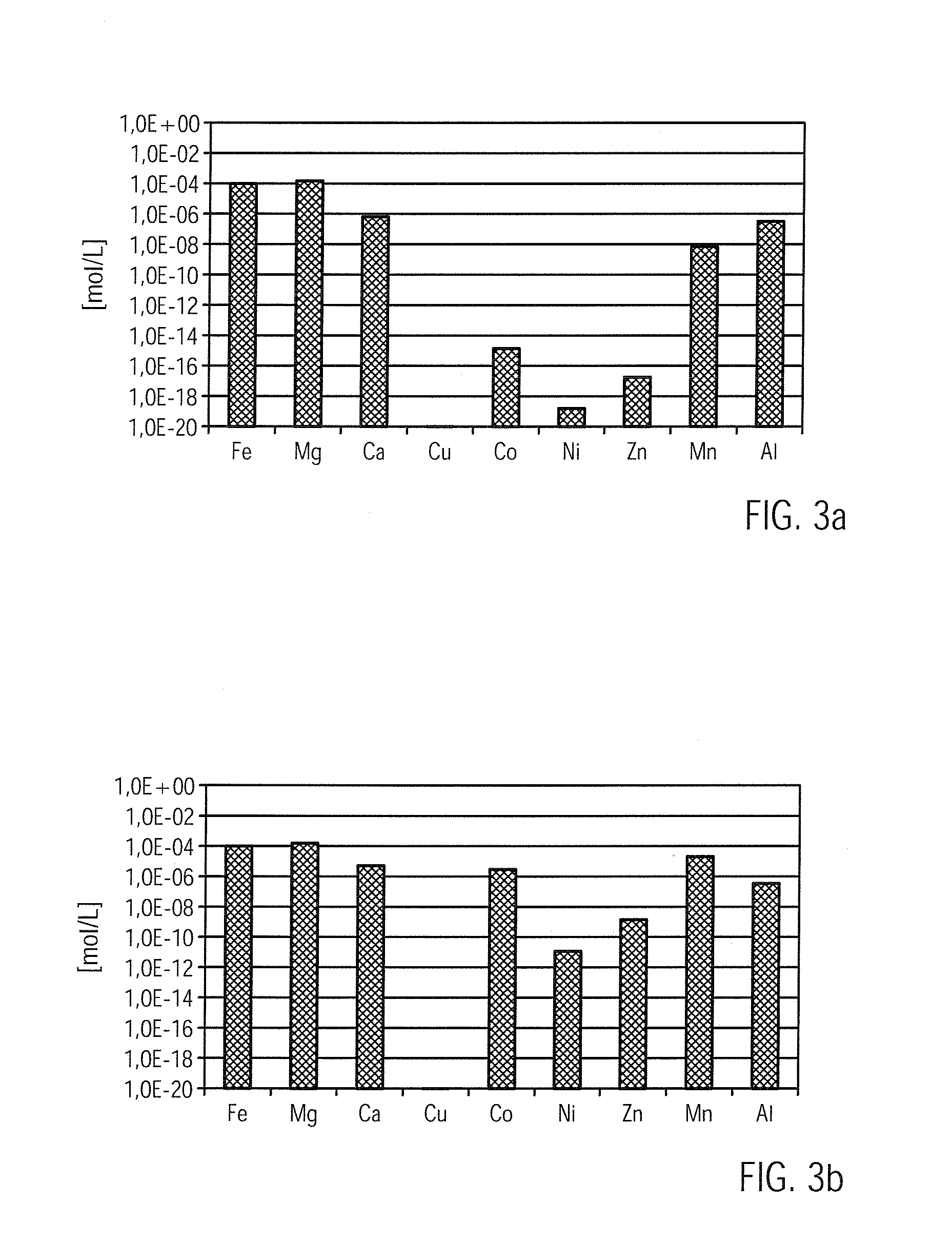Trace Element Solution For Biogas Methods
- Summary
- Abstract
- Description
- Claims
- Application Information
AI Technical Summary
Benefits of technology
Problems solved by technology
Method used
Image
Examples
example 1
Complexing of the Trace Element Solution of DSMZ Medium 141
[0096]The composition of the trace element solution is set out in Table 5. Also of note here is the fact that according to references the concentration of ions which may be precipitated by sulphide is distinctly higher than the concentration of the complexing agent NTA. In the use of this trace element solution, also as expected, a fine sediments forms, as soon as a sulphur-based (Na2S; Na2S2O3) reduction agent is added. This may be prevented by a suitable addition according to the invention of complexing agents e.g. 15 mmol / L pyrophosphate, 0.2 mmol / L galacturonic acid, 0.4 mmol / L cysteine, 0.05 mmol / L acetylacetonate and 0.3 mmol / L leucine.
TABLE 5Table 5: Composition of the trace element solutionof DSMZ medium 141 for a methaneogenic archaeonm [g / L]c [mmol / L]NTA1.50007.853MgSO4 × 7 H2O3.000013.717MnSO4 × 2 H2O0.50002.277NaCl1.000021.739FeSO4 × 7 H2O0.10000.199CoSO4 × 7 H2O0.18000.339CaCl2 × 2 H2O0.10000.500ZnSO4 × 7 H2O0.1...
example 2
[0097]Shown in Table 6 is an exemplary composition of a trace element solution according to the invention. Used as first strong complexing agent is EDTA and as second complexing agent a mixture of phosphorous acids. If the substrate of the biogas fermentation is an effluent, e.g. of a papermill, then the solution may be added, for example, at a ratio of 1:1000 to the substrate. If the substrate is a waste or vegetable raw material, the solution may be added to the substrate at a ratio of, for example, 1:100.
TABLE 6Elementmmol / LMo0.42Ni1.12Se0.08W0.90Mn0.80Co1.00Zn0.74Cu0.59B1.64Fe4.60Complexingagentmmol / Lmg / LEDTA7.22102H4P2O77.21282H6P4O137.22434H4P4O127.22304H3PO27.2475H3PO37.2590
example 3
Dry Fermentation of Maize Silage in a 500 kW Plant
[0098]In a plant designed in accordance with DE102005041798, maize silage is feremented and converted into biogas. At the start of feeding, a volume-specific loading rate of 0.75 kgoTM / (m3 d) is set and the feed rate per week is increased by 0.5 kgoTM / (m3 d). On reaching a volume-specific loading rate of 3 kgoTM / (m3 d), the acids in the reactor begin to increase—a sign that the anaerobic biomass in the reactor is overloaded. The increase in feeding is suspended for time being, but the rise in acids continues. A commercially available trace element solution, complexed with two complexing agents of different strength according to the method described in the invention, is now added to the reactor. The acids thereupon decline within 10 days and feeding is continued. Just 90 days from the start of continuous addition of trace elements, the acids increase again. The volume-specific loading rate is meanwhile 7 kgoTM / (m3 d). The feed rate is...
PUM
 Login to View More
Login to View More Abstract
Description
Claims
Application Information
 Login to View More
Login to View More - R&D
- Intellectual Property
- Life Sciences
- Materials
- Tech Scout
- Unparalleled Data Quality
- Higher Quality Content
- 60% Fewer Hallucinations
Browse by: Latest US Patents, China's latest patents, Technical Efficacy Thesaurus, Application Domain, Technology Topic, Popular Technical Reports.
© 2025 PatSnap. All rights reserved.Legal|Privacy policy|Modern Slavery Act Transparency Statement|Sitemap|About US| Contact US: help@patsnap.com



